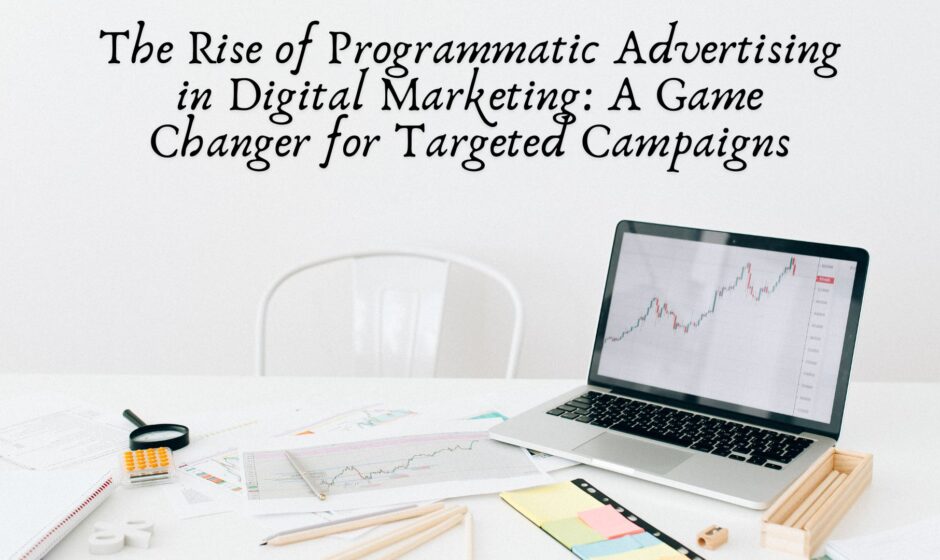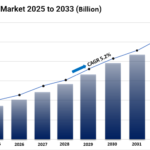In today’s digital age, advertising has evolved significantly from traditional media to more sophisticated, data-driven methods. One of the most transformative shifts in the advertising world has been the rise of programmatic advertising. This approach, powered by artificial intelligence (AI) and data analytics, has revolutionized how ads are bought, placed, and optimized in real-time. In this article, we will explore what programmatic advertising is, its growth, benefits, challenges, and why it has become a game changer for digital marketing strategies.
What is Programmatic Advertising?
Programmatic advertising refers to the automated process of buying and selling digital ad inventory through real-time auctions and AI-powered systems. Unlike traditional methods where ad placements were negotiated manually, programmatic advertising relies on algorithms to purchase ads across various digital platforms—websites, apps, and social media—based on specific targeting criteria such as demographics, behavior, and location.
The process involves demand-side platforms (DSPs) for advertisers to bid on ad space, and supply-side platforms (SSPs) for publishers to manage their inventory. This dynamic and real-time approach enables advertisers to reach their audience more efficiently. While publishers can maximize revenue from ad space.
The Evolution and Growth of Programmatic Advertising
The journey of programmatic advertising began in the early 2000s with the development of basic ad exchanges that allowed real-time buying of ads. Over the past decade, programmatic advertising has exploded in popularity as advertisers recognize the potential for enhanced targeting, cost-efficiency, and streamlined processes. According to eMarketer, programmatic ad spending accounted for 85% of all digital display ad spend in 2023, and this trend is expected to continue growing rapidly.
Several factors have contributed to this rise:
- Data Explosion: The increasing availability of user data has provided advertisers with unprecedented insights into consumer behavior. Programmatic advertising harnesses this data to serve hyper-targeted ads to the right audience at the right time.
- Advanced Technology: The use of AI and machine learning has improved the efficiency of programmatic systems, enabling more personalized, contextually relevant ads. These technologies allow advertisers to optimize campaigns in real-time based on performance metrics.
- Cross-Channel Integration: Advertisers are now able to buy ad space across multiple channels—web, mobile, video, social media, and connected TV—through a single programmatic platform. This integrated approach provides a cohesive experience for both brands and consumers.
- Cost-Effectiveness: Traditional ad buying often involved a lot of inefficiency and wasted impressions. Programmatic advertising allows for more precise targeting, which reduces wastage and leads to better ROI.
Key Benefits of Programmatic Advertising
Enhanced Targeting Capabilities:
Programmatic advertising enables brands to reach specific audiences based on behaviors, interests, and demographics. For example, an e-commerce company can target users who have previously searched for or shown interest in similar products. This results in highly personalized ads that resonate with consumers.
Real-Time Bidding and Optimization:
With real-time bidding, advertisers can adjust their strategies immediately based on the results of a campaign. For instance, if an ad is performing well, more budget can be allocated to maximize reach, while underperforming ads can be paused or optimized.
Increased Efficiency and Speed:
Traditional ad buying is often a lengthy process, involving negotiations and paperwork. In contrast, programmatic advertising is automated, allowing brands to launch campaigns much faster and with minimal human intervention.
Better ROI:
Through more accurate targeting and optimized spending, programmatic ads often yield better results at a lower cost compared to traditional methods. Advertisers can track the effectiveness of each ad and adjust their budgets accordingly to ensure optimal performance.
Cross-Platform Reach:
Programmatic advertising allows brands to engage with their audience across multiple platforms. Whether it’s display ads, mobile ads, video content, or social media, brands can maintain a unified approach to reach consumers across various touchpoints.
Challenges of Programmatic Advertising
Despite its numerous benefits, programmatic advertising does come with its own set of challenges:
Data Privacy and Compliance:
As data collection plays a central role in programmatic advertising, concerns about data privacy have become a significant issue. Regulations like GDPR (General Data Protection Regulation) and CCPA (California Consumer Privacy Act) have forced companies to rethink how they gather and utilize user data. Failing to comply with these regulations can result in hefty fines and damage to a brand’s reputation.
Ad Fraud:
The anonymity and scale of programmatic buying have made it susceptible to fraud. Bots and fake impressions can lead to wasted ad spend, and fraudulent actors can exploit the system. However, the industry is taking steps to combat this issue, with technologies such as fraud detection and verification services becoming more prevalent.
Complexity and Transparency:
The automated nature of programmatic advertising means that some aspects of the process. Such as auction dynamics and pricing, can be difficult for advertisers to fully understand. This lack of transparency can lead to concerns about where the ad dollars are going and whether the performance metrics are being accurately reported.
Brand Safety:
Ensuring that ads are displayed on appropriate, safe websites is a concern for many advertisers. The risk of placing ads on controversial or harmful content can damage a brand’s image. Therefore, advertisers must use brand safety tools and ensure proper vetting of platforms and content.
The Future of Programmatic Advertising
As the digital landscape continues to evolve, programmatic advertising will likely play an even larger role in marketing strategies. The rise of connected TV (CTV), the increasing use of voice search. And the growth of the Internet of Things (IoT) are expanding the boundaries of programmatic buying. Advertisers will need to stay ahead of these trends to maximize their reach and relevance.
The integration of artificial intelligence and machine learning into programmatic platforms will continue to enhance targeting capabilities, automate optimization. And improve the overall efficiency of campaigns. Furthermore, as privacy concerns grow, the development of more transparent, ethical data practices will be crucial in ensuring the sustainability of programmatic advertising.
Conclusion
Programmatic advertising has undoubtedly transformed the digital marketing landscape. It has enabled advertisers to reach their audience more effectively, optimize their campaigns in real-time, and achieve better ROI. However, challenges such as data privacy, fraud, and transparency need to be carefully managed to ensure the continued success of this advertising model. As technology advances and the digital ecosystem expands, programmatic advertising will continue to evolve, presenting new opportunities for brands to engage with consumers in innovative ways.
For digital marketers, embracing programmatic advertising is no longer optional—it’s a vital component of any comprehensive marketing strategy.



